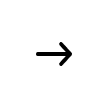There’s a reason why the cockatiel is one of the most popular companion birds — this slender Australian parrot can be both cuddly and bold. Cockatiels can also be curious and, at times, feisty. With a cockatiel in the house, you are likely to hear a repertoire of chirps and whistles. Pied Cockatiels have a striking combination of yellow or white with light or dark grey. Lutino Pieds would have darker yellow “splotches.” The amounts and placement of color vary widely. Even, symmetrical marking is desirable.
Due to the fast turnonver rate of these pets, it is difficult to provide the exact date of birth. However these babies are mostly sold in between 7-11 Weeks of Age.
The Gender is not guaranteed. However, A DNA test can be arranged upon customer’s request after the purchase of the bird to determine the gender at an additional cost.
Livestock in store is health guaranteed. However, we cannot provide any life warranty after these pets are kept in any of our uncontrolled environment. It is important to provide a proper habitat by following some suggested tips. More information can also be obtained from specialized animal care staff at the time of purchase.
Care Guide and Recommendations
Habitat
- A Roomy Cage. Non-toxic powder coating Metal one (minimum size recommended is double the span of their wing size when stretched out together or biggest possible.
- Humid and warm environment. (Automatic / manual misting / showering regularly { specially made shower & window perches are quite helpful}.
- A combination of tap water shower and use of recommended bird bath sprays with gland oil helps relieve / eliminate minor skin irritation and itchiness on the body.
- Bedding (Preferable: Fresh and Comfy Recycled Paper Bedding / aspen shaving / corn cob)
- Toys (They love to chew, therefore, providing a few toys helps in catering to a healthy lifestyle for the pet!). A combination of 5-7 (2-3 hard & 3-4 soft chewable {food grade coloured toys).
- A combination of sand (nail & beak filing) and regular perches inside the cage. (Preferably Java / dragon wood).
- Installation of Java tree on top of the cage with extra food bowls (steel ones) and a couple of hanging toys.
- A minimum of 3 steel containers.
- Food Bowl (Usually included in Cages). Mixture of Tropican and Tropimix Food.
- Mineral and Vitamin Bowl. (Clay Cal and Prime Vitamin Amino Acid Mixture). Moist food including Fruits, Veggies etc. to be dropped / served in this bowl.
- Water bowl. regular tap cold water (put some anti chlorine drops). Water to be changed at least once a day or every time the bird dropping is seen.
- Hideout. Hammock / Tent for them to feel protected. Unwanted exposure stresses the bird out.
- UVA / UVB lighting has proved to be very beneficial for these birds. It helps processing the calcium in captivity and also help controlling the temperature in cage. Metal dome are to be used and to be placed on top of the cage.
Diet Plan
- Please follow the feeding guide provided in the chart below.
- Mineral/ Salt Block / Cuttlefish bone.
- Treats
Highly Pedigreed
In-house Bred in Free Flight Aviary. Captivity born not imported.
Between 7-11 Weeks of Age at the time of delivery.
Raised only on Hari Approved Products
Breeders are Fed:
Organic Pellets (Tropican)
Parrots Nut Mix (Tropimix)
Fruits
Veggies
Sprouts
Beans
Bentonite Clay
Prime Vitamins
Electrolytes
Kept in UVA, UVB and Infrared Nocturnal Lighting
Lighting
UVB enables birds to produce vitamin D, also known as the “sunshine vitamin,” which is essential for calcium metabolism and immune function. UVC is normally filtered out by the earth's ozone layer and does not exist on the planet naturally.
UVB plays a very important role. It allows your bird to synthesise Vitamin D3 in their skin or through a special process involving the preening gland. Parrots need Vitamin D3 to metabolise calcium which they use to produce eggs, build and maintain strong bones and maintain normal growth.
Keeping your bird under right amount of UVB needs some consultation with a Certified Professional.
Despite other benefits from UVB, it helps processing the calcuim in captivity and help improving the birds vision.



